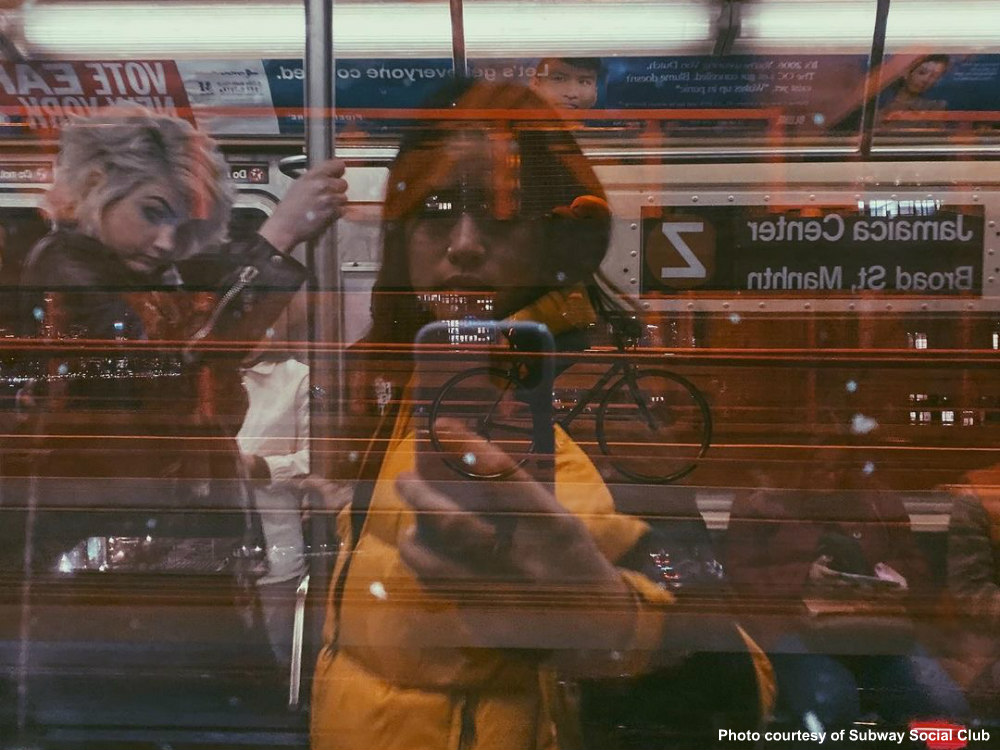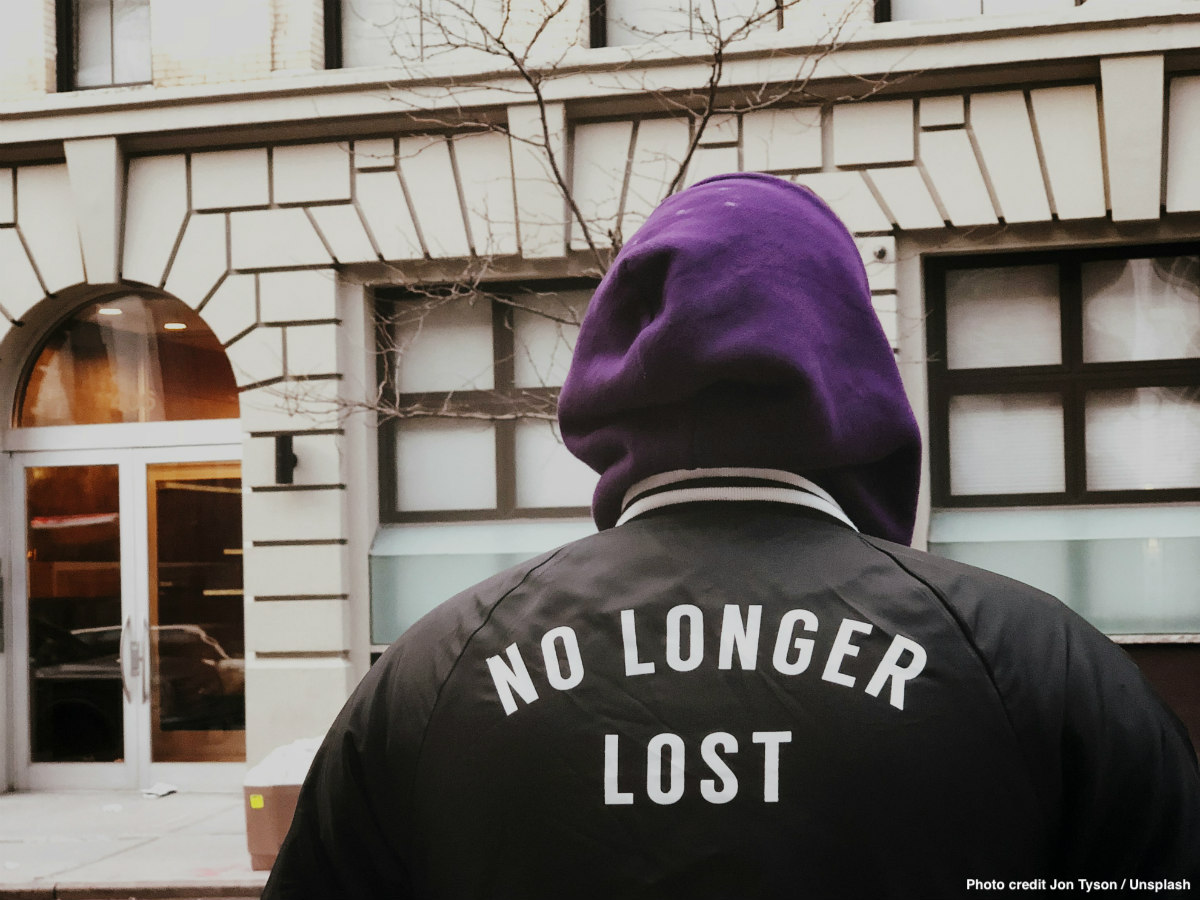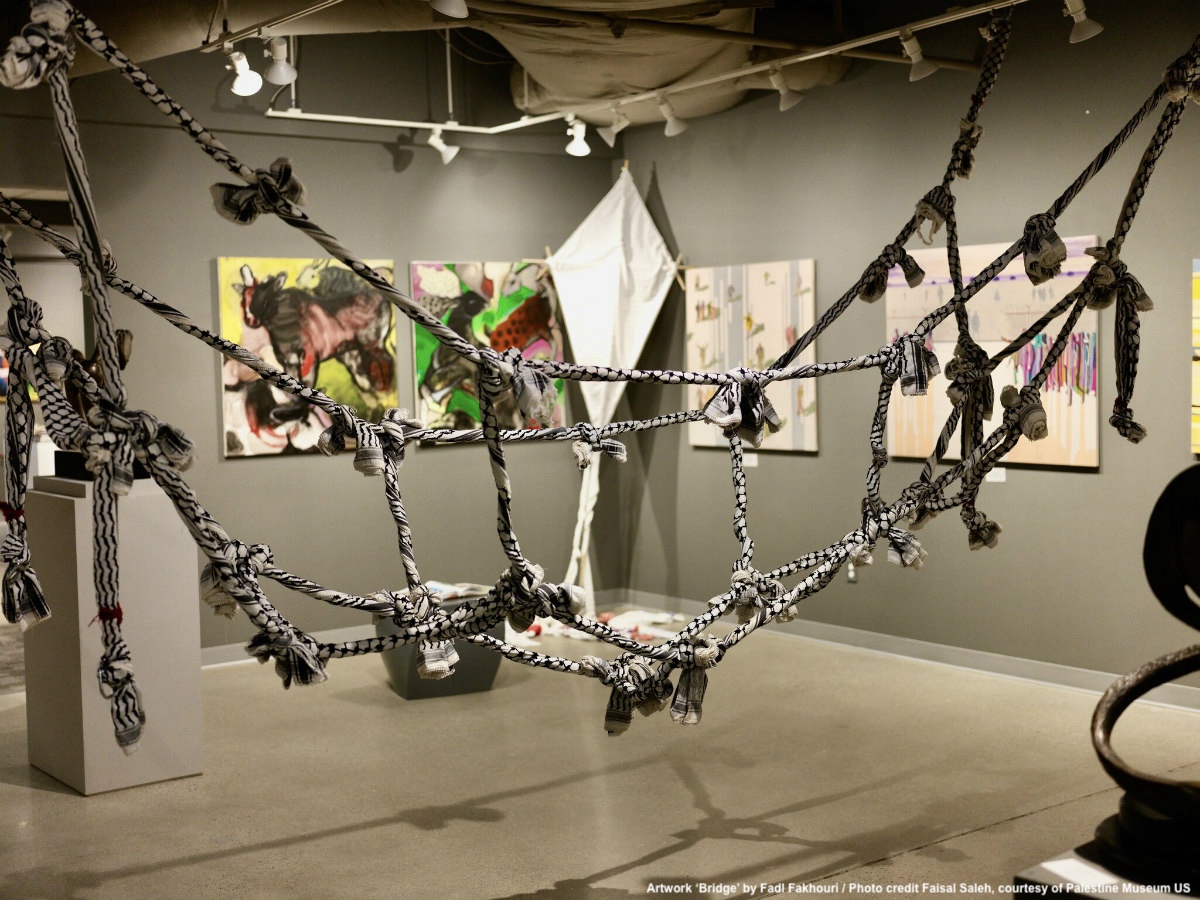As restaurants, bars and museums in New York remain open at little capacity, there is still an indoor space for the public where New Yorkers can hang together without capacity restrictions. Yes, the subway, it is a public space too. But we don’t necessarily socialize with strangers on the subway. Or do we? Subway riders go out of their way to just look at their phones and avoid eye contact. But why not consider the subway as such, a heavily visited common space that holds the city together? Changing the perception towards the subway could revive public transportation as a valuable scheme of public space.
‘Despite stereotypes, New Yorkers actually want to talk, this is truly New York. But meeting new people in the city is really hard. And it can be even harder on the subway, which is why the Subway Social Club exists’, says Claire Feuer, one of its co-founders.
‘Meeting is hard. Why is that? This is what single people are thinking about the minute they wake up in the morning. And we are surrounded by people, they are right next to us on the bus, on the street. But we can’t meet them. Why don’t they meet us? Because strangers have a bad reputation’. Subway Social Club once used this conversation from the iconic Seinfeld TV show playing in New York to exemplify the barriers.
‘At Subway Social Club we believe that the New York subway is essential to the city’s survival. The way we support the subway is by highlighting, and building on, the existing sense of community on and around the train. We facilitate subway conversations and host events in and about the subway’, explains Claire Feuer.

She co-founded Subway Social Club with her mother Wendy Feuer, who was the founding director of the Metropolitan Transportation Authority’s Arts for Transit and served as Director of Art and Design for almost eleven years (1985-1996). Claire is a procurement manager working full-time, putting a lot of effort on the Subway Social Club in her free time.
Understanding public attitudes towards the subway
Every person, even visitors to New York, can join the Subway Social Club by wearing a pin with the club’s logo ($10 for 4 on SubwaySocialClub.com) to signal to others that they are open to conversation during the ride. Here’s the thing. Wear a pin when you want to chat, take it off when you don’t.
In October 2019 we did an experiment by starting conversations on the subway. Ninety percent of the people were open to talk. I was blown away. All of a sudden the subway became so social.
Claire Feuer is a young cultural anthropologist (in training) embarking on a journey to study ridership, human behaviour and New York’s complex train system. ‘When it comes to conversation, having the skill to initiate a conversation is crucial. I am always interested in studying either topics and places where people come together, from different cultures and religions. Subway is that place. I hope to illustrate how vital it is to the city’.
‘I grew up in New York and started riding the train when I was eleven. I always wondered that it was strange that nobody talked, since everyone in New York has such a fascinating story or experience to share. So I thought it would be great if there was a way to identify who wanted to chat’.
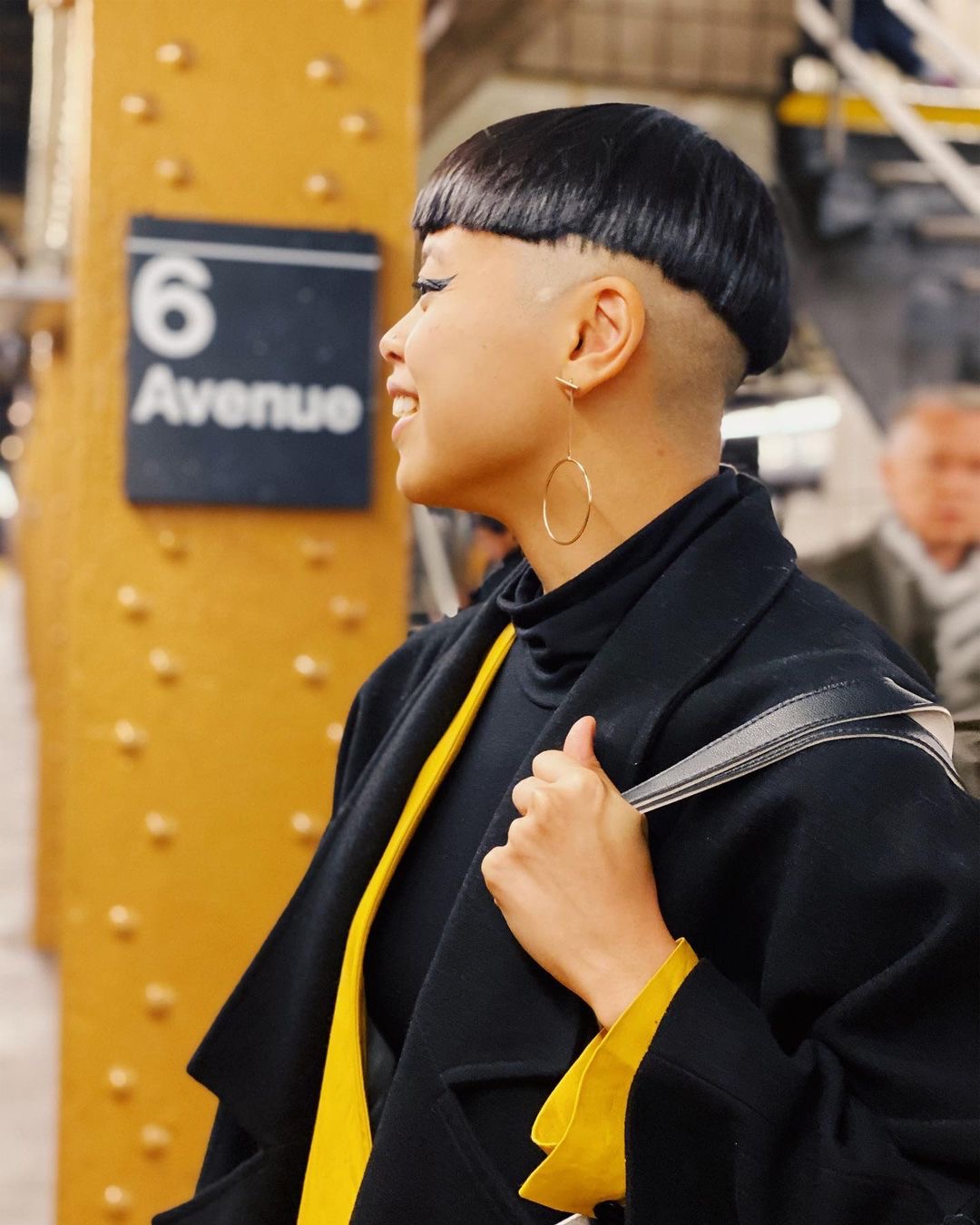
The idea of a pin distribution is just part of Subway Social Club’s vision to explore the future of mass transit systems by taking a more holistic approach to the subway. Feuer’s fieldwork will lead her deep into the archives, community board meetings and subways’ relationship to human interactions. She will speak with transit employees, rail fans, dancers, musicians and artists.
‘In addition, to study subway culture I’m narrowing down on one topic: silence. Why do we, as riders, often opt for silent? Is it because of our close proximity in a confined space? Is technology that alluring? In my first phase, I’ll be observing riding behaviour in the train and asking people what they think about silence and overall behaviour on the subway. In my second phase, I’ll be following up on people who break the silence. Musicians, panhandlers, etc. And in the third phase, I’ll be focusing on how to bring people together so that genuine connections can be made’.
To revive public transportation is in the hands of New Yorkers
Claire Feuer believes that people feel ownership in subways, despite the reluctance of many to socialize in proximity to others. Still riders want to feel comfortable in a tight space where people surround them. The pandemic has brought this particular issue to the surface in terms of basic human safety and health. Therefore transit operators and city governments have reacted by implementing several changes, largely aimed at easing rush hours.
A recent article in the FT has analyzed the impact on mass transit system due to the loss of white-collar workers and students working remotely: ‘experts are talking about reinventions for a work-from-home world, such as ticket prices that reward less frequent travel and better service outside of traditional rush hours, even if peak service is cut’. There are concerns about what happens if passengers don’t return.
Transit agencies were already struggling to persuade urban dwellers to regularly use public transportation and keep it profitable, even before revenues have fallen victim to the pandemic.
In New York the subway is in an unimaginable fiscal disaster. It’s up to us, its riders, to advocate for public transit, hold those with power accountable, and to keep this city running by amplifying our voices in support of our subway.
In contrast, the concept of the 15-minute city, urban planning’s new utopia, attempts to give residents everything they need within a few minutes from their front doors. This idea would reduce the amount of cars on the streets. Would cities then concede public transportation to visions that focus on cutting down ‘unnecessary journeys’ instead of tempting citizens to take the subway? After all, the subway remains the only way to move large numbers of people around the city.
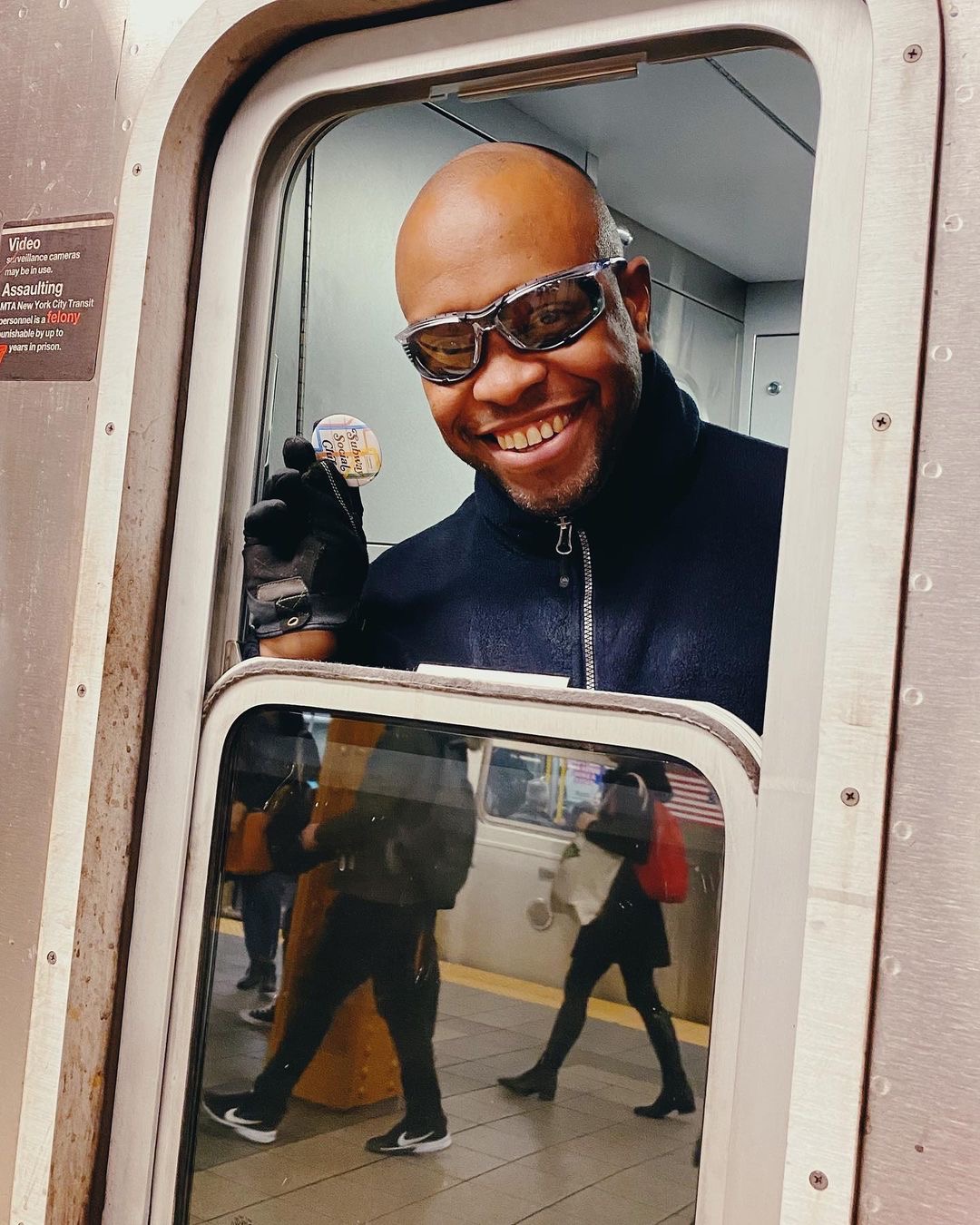
The subway reduces the gap between the rich and poor; it brings rich and poor neighbourhoods closer. It acts as a vehicle of inclusion no matter class, age, gender, race, and disability. And, in the midst of the pandemic, it has continued to take essential workers across the city.
The subway, a space of the civic commons
Looking more holistically at the subway, beyond purely mobility, could revive public transportation, while caring for the healthy function of the city. In fact, mobility advocates from Los Angeles to Chicago are spearheading a new discourse, which focuses on social justice rather than infrastructure and car free cities.
Due to the pandemic, we are now in a watershed moment of changing habits and routines in cities and removing wrong stigmas about public transportation serving only a blue-collar, working-class. If public and private sectors manage to alter commuting schedules, for instance for workers and students, so that fewer people need to board public transit during rush hour periods, it would be a great opportunity to revive public transportation.
A less crowded underground system, with commuters spread out through the day, would give more room to enhance the experience for daily users and visitors, fostering engagement, equity and sustainability. Some cities around the world have used art and design in the subway to make commuting a real and sensorial tangible experience. Art is powerful to activate people’s desire for connection.
I dream of a friendlier future for the subway. So, to help you meet new people, we’ll be hosting social distancing subway meetups where we’ll do some ice breakers, get to know each other, and take what we’ve learned down into the subway, explains Claire Feuer.
She looks forward to the day when more riders embrace their vulnerability and engage in conversation. And she is not alone. There are well over a thousand Subway Social Club members already since its start in February this year. And so many of them have sent Claire Feuer personal messages, saying that the stories she has shared have lifted their spirits.
You never know who you will meet in New York City and what you’ll learn from the stranger sitting across from you. But you might be willing to give it a try. The subway is, in all meanings, the backbone of cities with the ability to connect residents to one another. And ‘it is not the destination, it is the journey’.
